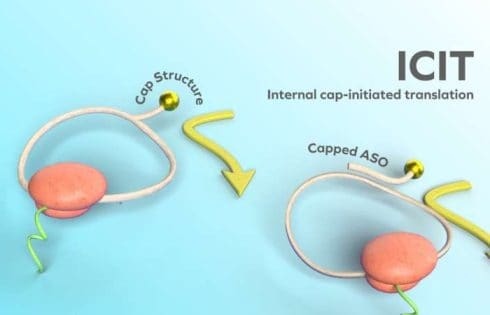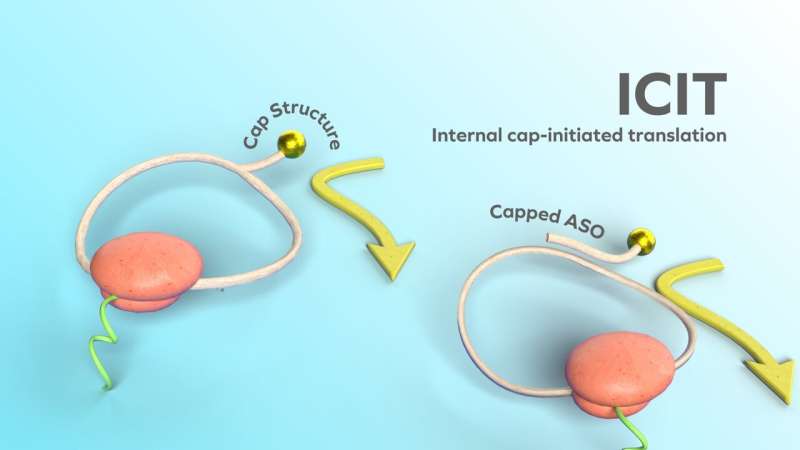
Imagine a breakthrough in cancer treatment where only malignant cells are targeted, sparing healthy host cells; or patients with abnormal protein synthesis are treated to produce a healthy protein. Hiroshi Abe and his colleagues at Nagoya University have identified two applications, among others, in a new study.
Their innovative approach, reported in Nature Biotechnology, called the Internal Cap-Initiated Translation (ICIT) mechanism, introduces a novel way to “switch on” protein synthesis only in target cells, creating healthy proteins to treat illnesses or toxic proteins to kill unwanted cells.
Capping circular mRNA in a new way
ICIT builds on the promise of circular mRNAs, a new generation of mRNA treatments known for their stability and reduced inflammatory effects compared to traditional linear mRNAs.
Unlike linear mRNAs, circular mRNAs are less susceptible to enzymatic degradation because of their lack of terminal structures, offering a sustained translation process.
However, one significant challenge with circular mRNAs has been the inefficiency of their translation inside living organisms.
Previous methods relied on long internal ribosome entry sites (IRES) for introducing the mRNA, which were difficult to optimize and often inefficient. Abe’s team overcame this hurdle by introducing a cap structure into the circular mRNA itself.
This internal cap structure triggers translation initiation, bypassing the need for IRES sequences, and significantly improves the efficiency of protein synthesis.
Precision therapy
Abe and his colleagues developed two designs. Among these, Cap-circRNA demonstrated superior performance, synthesizing up to 200 times more protein than commonly used circular mRNAs with IRES sequences. Importantly, this synthesis persisted for an extended period, even after traditional mRNA structures began to degrade.
This stability and ability to selectively target cells make Cap-circRNA an ideal candidate for developing precision therapies.
“This technology is expected to revolutionize mRNA medicine, including antibody therapy, genome editing, and protein replacement therapy,” Abe said.
“Current mRNA is fundamentally unstable, requiring constant injections to be used for treatments such as protein replacement, a problem that our technique overcomes. Using this, we could treat diseases caused by abnormal protein synthesis, such as Duchenne muscular dystrophy.”
Targeting cancer cells
The ICIT mechanism’s ability to control protein translation at the single-cell level also offers a transformative approach to the treatment of cancers and other tissue-specific diseases. By targeting specific RNA markers that are highly expressed in diseased cells, such as those found in liver cancer, the mRNA can instruct protein synthesis only in target cells.
This precision reduces the risk of off-target effects and side reactions, which are common challenges in current treatments. To test its efficacy, the team designed a circular RNA using ICIT to target HULC lncRNA, an RNA that is commonly found in liver cancer cells.

